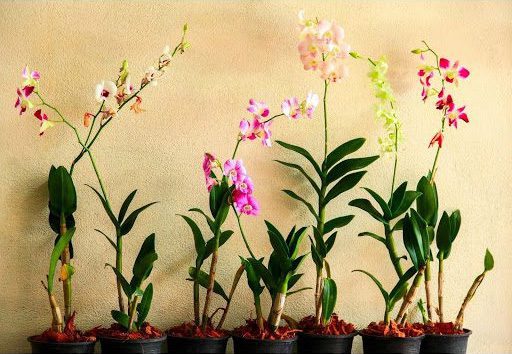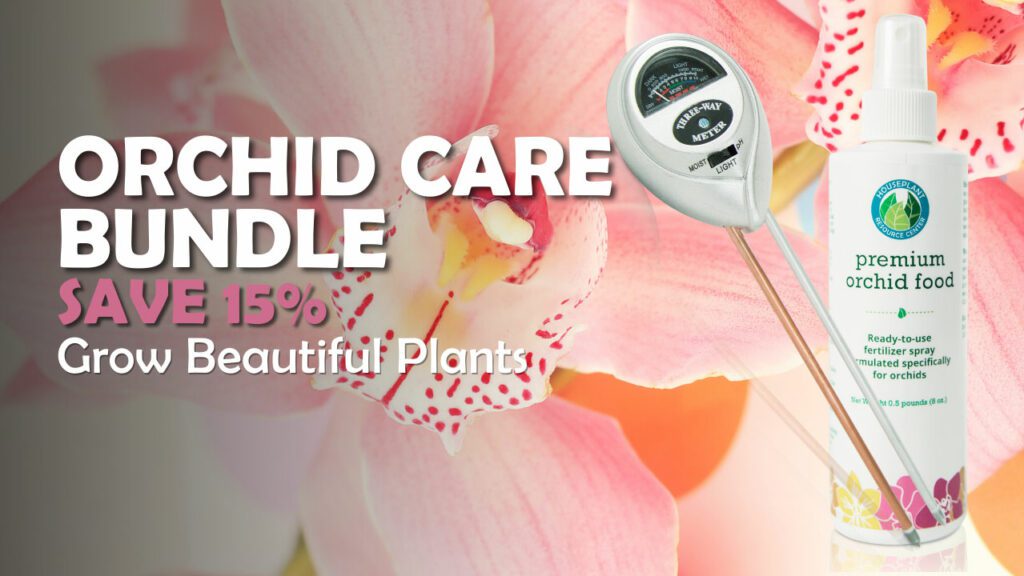Learn how orchids reproduce in the wild and how you can successfully propagate your orchid indoors.
When you’ve mastered orchid care and you want to add another orchid to your home garden, you have two options. You can either take a trip to your local nursery and buy another orchid plant, or you can propagate the orchid you already have.
Propagating some houseplants is super simple. With a spider plant or a Christmas cactus, you can multiply your plant in just a few minutes. All it takes is one small snip to remove a plantlet from the mother and a jar of water to encourage the new clipping to grow its own roots.
But propagating an epiphytic plant, like an orchid, is a bit more involved. And once you’ve successfully propagated your orchid, you can consider yourself a true orchid grower pro.
There are countless reasons to propagate your own orchid. It’s cost-effective since you don’t have to buy a whole new plant, it’s challenging so you can add to your gardener skill set, and it’s fun since it’s a job you can do with your family or friends. When you’re done, you’ll be incredibly proud of your new little plant. It’ll naturally brighten up your home or it’ll make a thoughtful gift.
Below, we’ll take a look at how orchids grow, how orchids reproduce in the wild, and how you can propagate your plant at home to grow your own collection.
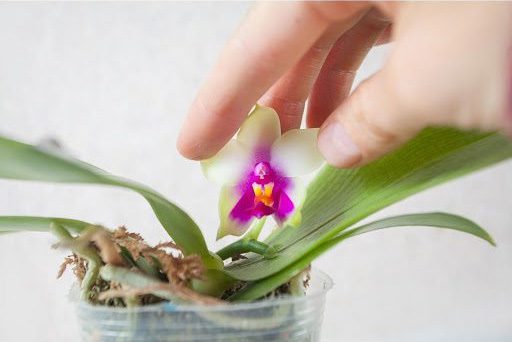
How do orchids grow in the wild?
In terms of growth, orchids come in two varieties. Some orchid species are monopodial, while others are sympodial. Let’s take a look at the difference; this will come in handy when you propagate your own orchid at home.
Monopodial orchids
The term “monopodial” means single foot. Monopodial orchids have a primary stem, leaves, and flowers that grow up from a single ball of roots. Monopodial orchids do not contain water reservoirs (known as pseudobulbs), and they usually bend into the classic orchid arch when they’re in bloom since the weight of full flowers causes the stem to droop.
Phalaenopsis, vanda, and Angraecum are popular examples of monopodial orchids.
Sympodial orchids
Rather than grow from one vertical stem, sympodial orchids grow from a rhizome, a stem that is more or less horizontal. From the rhizome, the orchid grows both roots and pseudobulbs. Sympodial orchids can draw water from their pseudobulbs in drought conditions, so they don’t have to be watered as frequently as monopodial orchids.
Cattleya, oncidium, dendrobium, and cymbidium are popular examples of sympodial orchids.
How do orchids reproduce in the wild?
In their natural habitats, both monopodial and sympodial orchids reproduce just like other plants: they’re pollinated by insects and they naturally disperse seeds.
Pollination
Undoubtedly, orchid blooms are ornate and fascinating; but an orchid’s flowers aren’t simply decorative. In fact, they serve a very specialized purpose.
In the wild, orchids have a unique relationship with bees, moths, and other insects. Typically, orchids develop their intricate blooms in the shape of the insect they hope to attract. When an insect mistakes the orchid for a mate, it visits the flower, picks up the orchid’s pollen, and flies away when it realizes it was mistaken. One insect can visit hundreds of plants per day, inadvertently pollinating orchids while it flies from flower to flower.
Dispersing seeds
Like other plants, orchids disperse their seeds so they can grow prolifically without getting too crowded in one place. Orchids have very small, light-weight seeds, which makes them ideal for traveling in the wind or attaching to animals who carry them to other areas. When the small seeds find a favorable growing medium, they sprout roots.
Seed dispersal is integral to keeping the species alive since too many plants growing in one place would easily lead to nutrient deficiencies in the ecosystem and in the orchids themselves.
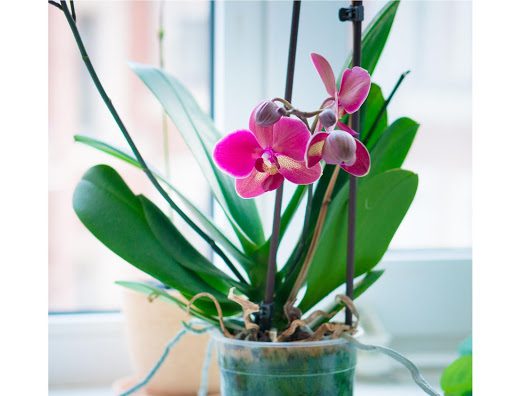
How can I propagate my orchid at home?
Learning how orchids reproduce in the wild provides good foundational knowledge for propagating your orchids at home, though the process is a bit different.
Since you likely don’t want to spend time pollinating your orchids by hand, and you probably don’t want to wait for your orchid to disperse its own seeds, you can propagate your orchid in one of three main ways: by dividing it along its rhizome, cutting a stem and replanting it, or repotting a baby plantlet that has sprouted at the base of your orchid.
Let’s dive deeper and cover these propagation techniques in more detail.
Division
If you’re hoping to propagate a sympodial orchid, it’s easiest to divide the plant along its rhizome. For best results, sever the rhizome while the plant is still in its pot so you don’t disturb the roots. When new growth is established, the plants can be separated into two distinct pots.
Stem cuttings
Both monopodial and sympodial orchids lend themselves to stem cutting. Canes and flower stems can be cut with a pair of sterile, sharp shears and placed in a pot of sphagnum moss or orchid potting mix to callus over and grow new plantlets. Once you’ve cut the stem and placed the cutting in moss, wrap the pot in a transparent plastic bag and place it in a warm spot with bright light. In three to four months, your cutting may show new growth, especially from nodes along the stem.
If you have trouble keeping your cuttings upright in their container or medium, you should try these easy-to-use node holders! This handy propagation tool is a simple way to keep root cuttings healthy and in place while they take root, which gives those roots more room to grow without the added pressure of supporting the plant’s weight. This plant node support also helps your cuttings root faster!
Keiki cuttings
Phalaenopsis and other monopodial orchids tend to produce small plantlets, called keikis. Plantlets will often appear at the base of the mother plant. When the new plantlet has a one-inch root and two or three leaves, it can be severed from its mother plant and be repotted. When you repot the keiki, keep its roots near the surface so they’ll have plenty of access to air to encourage strong growth.
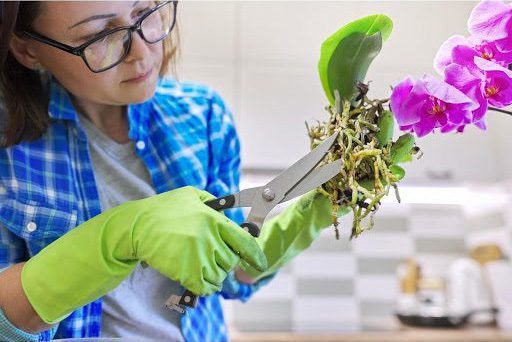
Essential tools for propagating your orchid
Whether you choose to propagate your orchid by division, stem cuttings, or keiki cuttings, you’ll need the help of some trusty orchid-growing tools.
For best results, have these tools and accessories ready before you propagate:
- A new orchid pot
- A well-draining orchid growing mix
- A pair of sharp shears to make clean cuts
- A plant fungicide to apply to cuttings and discourage disease
- A root supplement to encourage new, healthy roots
- Premium Orchid Food to nourish your new plant once it’s repotted
We’re here to support you as you grow your orchids, both old and new. Join our Facebook group for further support. We look forward to helping you propagate your orchid plants and watching them bloom for years to come.

